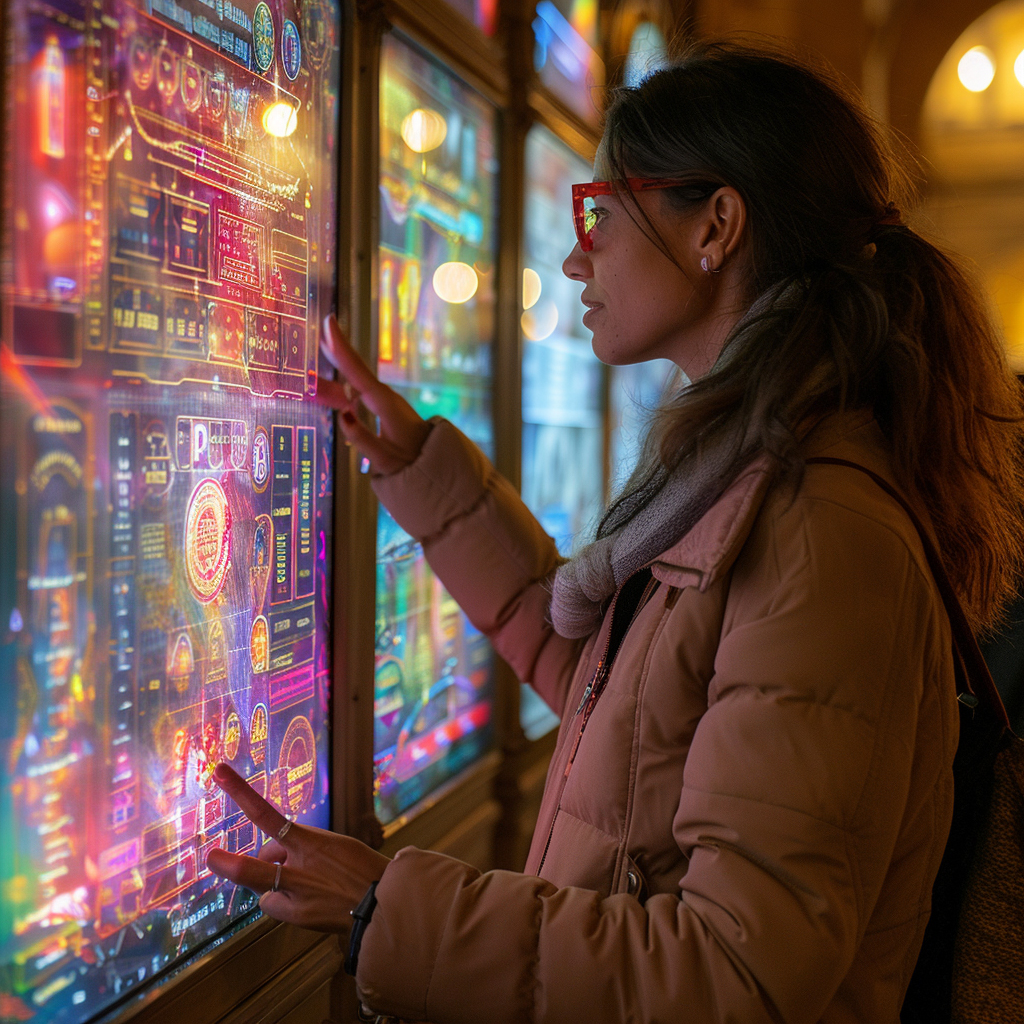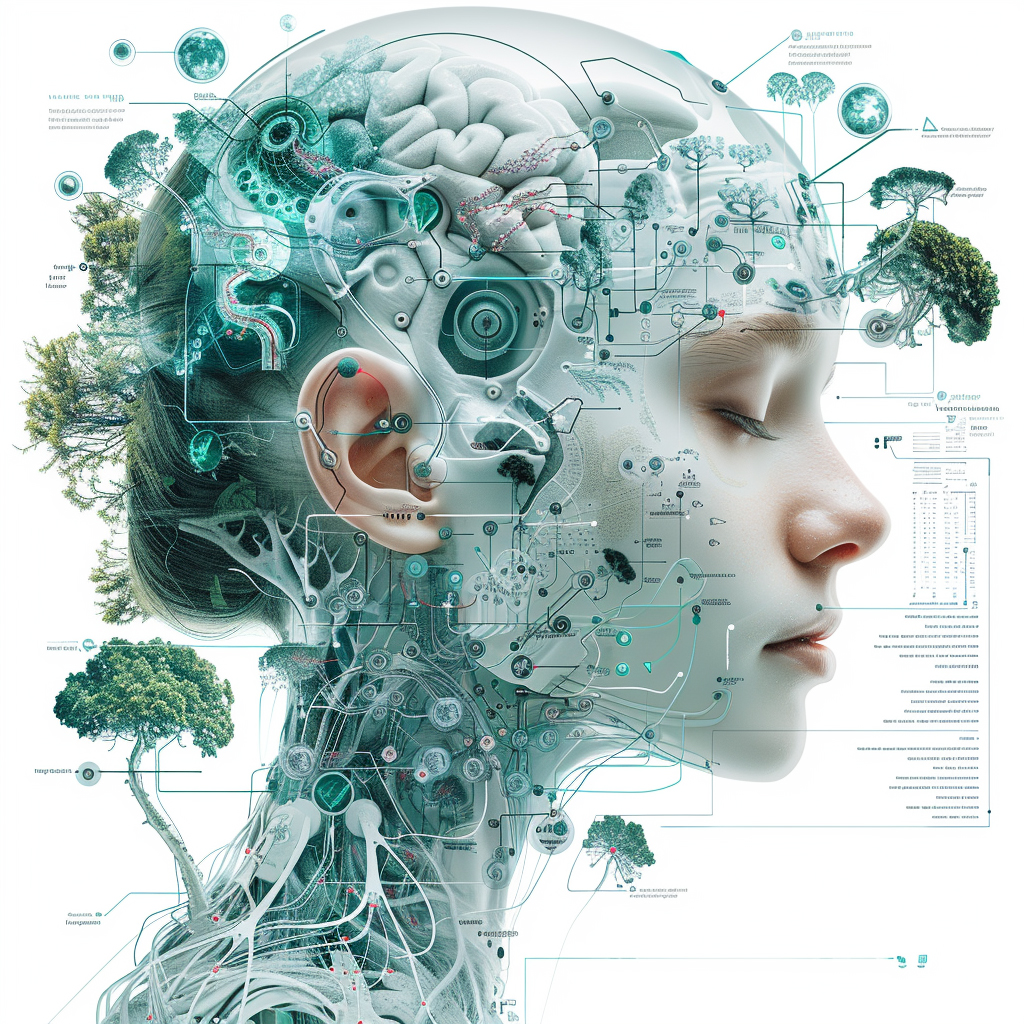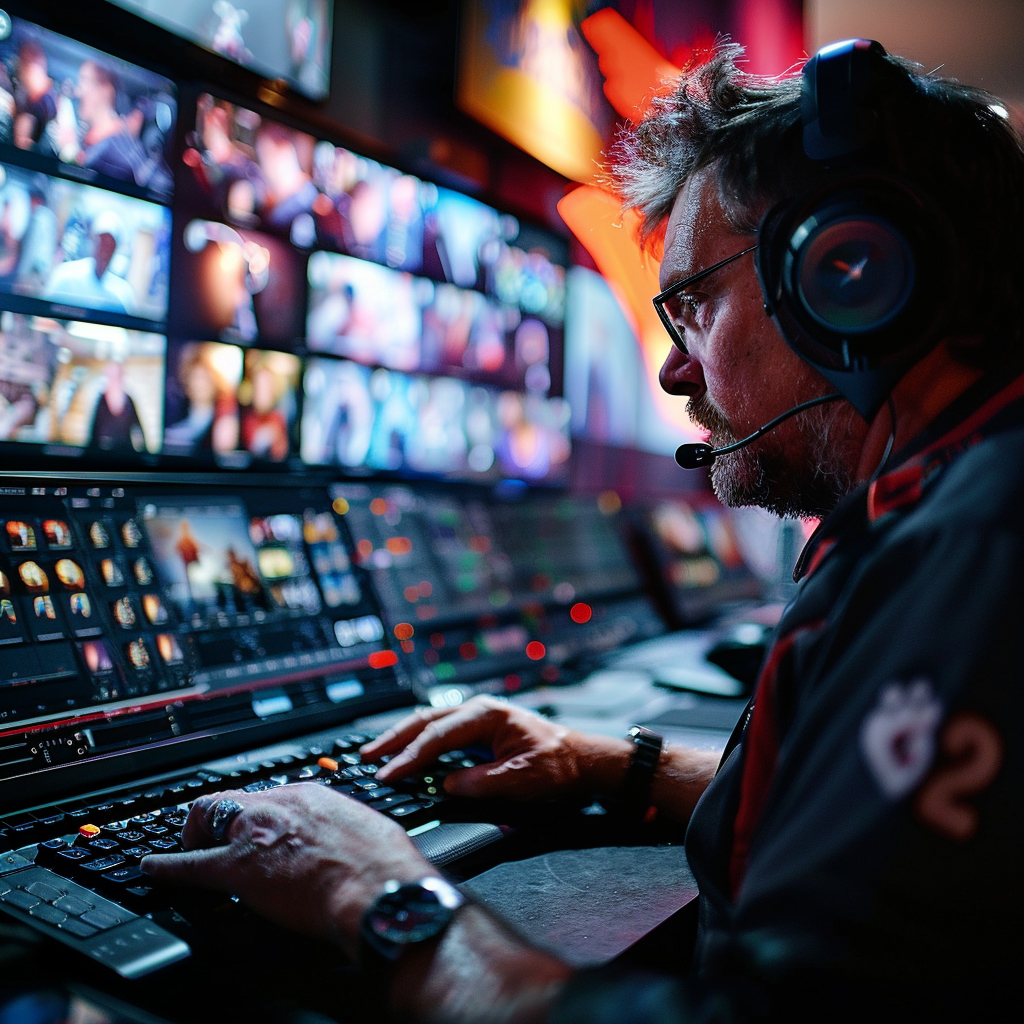1. Real-Time Translation
AI enables near-instantaneous translation of speech and text, allowing people who speak different languages to communicate with minimal delay. Modern translation models use neural networks to interpret and convert language on the fly, which means conversations can flow almost as if no language barrier exists. This is evident in tools like real-time translation earbuds and meeting software that provide live subtitles or audio translation. The technology has improved to handle continuous speech input and produce fluid output, making it viable for uses ranging from casual travel interactions to live international conferences. AI-driven real-time translation thus vastly enhances global communication by providing immediate understanding across languages in scenarios where waiting for human translators would be impractical.

The market for AI-powered real-time translation has been expanding alongside these capabilities. For example, the AI language translation market grew from about $1.88 billion in 2023 to $2.34 billion in 2024, nearly a 24.9% increase. In practical use, public services are also adopting these tools: by 2024, roughly 35% of city councils in the U.S. had begun piloting AI translation systems to offer live translated transcripts at local government meetings, improving accessibility for non-English speakers. Education and business sectors likewise report rising usage – over 40% of universities in 2024 explored integrating real-time AI translation in lectures to support multilingual students. These statistics underscore how quickly real-time translation is becoming a mainstream solution across various domains.
2. Contextual Understanding
AI translation systems have significantly improved their contextual understanding, meaning they consider the surrounding text and situation to choose more accurate translations. Instead of translating word-by-word, advanced neural models analyze whole sentences (or even multiple sentences) to grasp the intended meaning. This helps disambiguate words with multiple meanings and appropriately translate phrases based on context (for instance, knowing when “bank” means financial institution vs. riverbank). Such context awareness also allows AI translators to handle formality, tone, and domain-specific nuances better than earlier phrase-based systems. Overall, by mimicking how human translators use context, AI provides translations that are more coherent and faithful to the original message in context-heavy content like idioms, humor, or technical documents.

The impact of contextual AI is evident in measurable quality gains. Studies show that modern transformer-based translation models have achieved about a 75% improvement in handling context compared to older translation systems. In one analysis, an AI system was able to process nuanced context (including idiomatic and cultural references) with roughly 82% accuracy, which represents a large improvement in maintaining correct tone and meaning. This context-aware approach led to a 70% reduction in errors that stem from missing context, relative to traditional methods. In practical terms, Google’s translation service even rolled out a feature in 2023 to offer multiple translations based on context for ambiguous phrases, highlighting the industry’s recognition of context’s importance. All these advances indicate that AI translators are far less likely to produce awkward or misleading outputs due to misinterpreting context.
3. Quality and Consistency
AI has driven notable improvements in the quality and consistency of translations. Through machine learning and feedback loops, translation engines continuously learn from corrections, leading to better accuracy over time. They maintain consistency by using glossaries and remembering how specific terms should be translated, which is especially valuable for technical or brand-specific language. AI systems can enforce a uniform style and terminology across large documents or sets of documents, something human translators might inadvertently vary. Additionally, quality assurance features powered by AI can automatically flag potential errors or suggest improvements, further enhancing final translation quality. As a result, organizations using AI translation benefit from highly consistent outputs that adhere to desired terminology and reduce the need for extensive manual edits.

Quantitatively, the consistency and quality gains are striking. In enterprise settings, AI translation systems have achieved about a 90% terminology consistency rate, meaning they use the same translations for key terms almost all the time across a text or project. This uniformity is far higher than what earlier translation workflows could guarantee. Moreover, companies implementing AI-based translation quality assurance report a ~65% reduction in post-translation editing or revision cycles. In other words, because the initial machine translation is more accurate and consistent, editors spend significantly less time fixing errors or inconsistencies. Another study even found that for certain language pairs, like English-to-Czech news translation, a state-of-the-art AI system preserved meaning better than human translators in a blind evaluation. These facts illustrate that AI has not only closed the gap with human translation quality in some cases, but it also delivers unwavering consistency that is hard to match at scale.
4. Handling of Slang and Idioms
Translating slang and idiomatic expressions has long been a challenge for machines, but AI is rapidly improving in this area. Traditional translation software often failed to capture the non-literal meaning of idioms or the nuance of slang, resulting in awkward translations. New AI models address this by training on vast datasets that include informal language (such as social media content, forums, and dialogue) so they can learn how real people use idioms and colloquial phrases. They also use context (as noted earlier) to infer meaning – for example, recognizing that “break a leg” is a good luck wish, not a violent act. AI systems can now more often provide equivalent slang or idioms in the target language, or at least convey the intended meaning in natural terms. This makes translations sound much more fluent and culturally appropriate, bridging informal speech in ways earlier translation tools could not.

Recent evaluations highlight that AI translations of idiomatic language are getting much closer to human-like understanding. Advanced systems can now correctly interpret and translate idioms and slang with about 78% success rate, whereas older rule-based or statistical systems managed only roughly 45% success on the same tests. This improvement is due to AI’s ability to incorporate cultural context and non-literal meanings during translation. For instance, Google Translate in late 2024 improved its handling of idioms by adding a contextual feature and even specifically tuning on 34 common food-related idioms in various languages. Users have noticed that phrases which previously led to mistranslations are now rendered more appropriately – a direct result of these enhancements. While no machine translator is perfect with every bit of slang (given how quickly slang evolves), the gap is closing: AI models’ accuracy with idiomatic expressions rose significantly in the past few years, reducing context-related translation errors by about 70% compared to prior approaches.
5. Support for Rare Languages
AI is extending translation services to rare and low-resource languages that historically haven’t been well-supported. Traditional translation systems needed large amounts of bilingual text to train on, which many minority languages lack. New AI techniques like transfer learning and zero-shot translation allow models to learn these languages with minimal data, sometimes by leveraging similarities with more common languages. As a result, languages spoken by smaller populations are increasingly being added to platforms like Google Translate and Microsoft Translator. This helps preserve those languages and gives their speakers access to digital content in their native tongue. AI thus plays a crucial role in narrowing the language digital divide, ensuring that communities who speak less-common languages can participate more fully on the internet and benefit from translation technology.

The progress in supporting rare languages is evident from recent expansions of translation tools. In 2022, Google Translate added 24 new languages to its service – many of them indigenous or historically neglected languages – bringing the total to 133 languages covered. This update impacted about 300 million new speakers of languages like Mizo (India), Lingala (Central Africa), Quechua, and Aymara (South America), which were included using AI training methods that required little existing translated text. Around the same time, Meta AI released an open-source model called NLLB-200 (No Language Left Behind) capable of translating 200 languages, including dozens of African and Asian languages with very limited prior translation data. This model delivered translations for low-resource languages with 44% better quality on average than earlier systems. Such advances mean languages once considered “too resource-poor” for machine translation are now seeing effective AI-driven translation. For example, the Hokkien language (spoken but not commonly written) saw its first speech-to-speech translation system in 2022, an achievement made possible only by cutting-edge AI techniques. These developments demonstrate how AI is dramatically expanding language coverage in translation services.
6. Integration with Other Tech
AI translation is increasingly being integrated into various technologies and platforms, making multilingual support a seamless part of many products and services. Through APIs and built-in features, developers can incorporate translation into websites, mobile apps, and software tools without needing separate workflows. For example, web browsers now automatically offer to translate foreign webpages in real-time, and social media platforms let users instantly translate posts in their feed. Video conferencing apps use AI to provide live caption translations during meetings. This tight integration means users often don’t even realize an AI is working in the background – the technology quietly bridges language gaps as a native feature of the application. The result is improved accessibility and user experience; people can interact, regardless of language, on their favorite digital platforms, and businesses can reach a global audience more easily by having translation woven into their tech stack.

The adoption of AI translation across industries underscores how embedded it has become. By 2023, almost two-thirds of translation service companies worldwide reported using machine translation in their workflows, rather than treating it as a standalone specialty tool. Furthermore, about 70% of these companies planned to further accelerate automation by 2025, integrating AI translation more deeply into their processes for efficiency. In the enterprise software realm, major providers like Salesforce and Slack have integrated translation features to let global teams collaborate in multiple languages, and Microsoft Office has an AI Translator built into Word, PowerPoint, and Outlook. The European Union’s eTranslation platform is another example, providing translation-as-a-service integrated into government systems across member countries. These trends are reflected in market growth: the machine translation market (software and services) approached $1 billion in 2022 and is projected to continue double-digit growth as more products bake in multilingual support. In short, translation AI is no longer an isolated tool but a ubiquitous layer in modern technology, from consumer apps to enterprise solutions.
7. Automated Subtitling and Dubbing
AI has revolutionized subtitling and dubbing of video content by automating what used to be labor-intensive tasks. Automatic Speech Recognition (ASR) transcribes spoken dialogue into text, and machine translation can then translate that text into multiple languages for subtitles. Text-to-speech or voice cloning technologies can generate spoken dialogue in another language, matching the original speaker’s tone and even lip movements (for dubbing). Together, these AI components dramatically speed up the process of creating multilingual versions of movies, TV shows, online videos, and e-learning materials. Content creators can now reach global audiences faster and at lower cost, since AI can produce subtitles in dozens of languages in minutes and suggest initial dubbed tracks that human editors can then refine. This automation increases accessibility (for example, adding subtitles for the hearing impaired or translations for foreign viewers) and allows media to cross language barriers more readily than ever before.

The growth of AI-driven subtitling and dubbing is reflected in market statistics. The global AI dubbing tools market – which includes software for automatically generating voiceovers in different languages – was about $0.98 billion in 2024 and is projected to reach $1.16 billion in 2025. Looking further ahead, forecasts put this market at roughly $2.23 billion by 2029, with a compound annual growth rate near 18%. This rapid growth is fueled by the explosion of streaming content and the demand to localize videos into many languages simultaneously. In practice, platforms like YouTube now report that viewers watch over 2 million hours of dubbed video content daily on YouTube, a trend boosted by the platform’s introduction of multi-language audio tracks for creators. Similarly, Netflix and other streaming services have begun leveraging AI to assist in subtitling and dubbing their catalogs, reducing turnaround times for new language releases. By late 2023, real-time AI subtitling had also become far more accurate for live events and webinars, making it feasible to auto-generate captions on the fly with only minor errors. These developments highlight how AI is scaling audiovisual translation in ways that were impossible with manual methods alone.
8. Scalability
AI enables translation services to scale to volumes and speeds that human translators alone could never achieve. Whether it’s translating millions of e-commerce product descriptions or providing on-demand translation for a global user base, AI systems can handle the load by operating in parallel and at high velocity. Cloud-based translation APIs can process large batches of text or streams of content 24/7 without fatigue, ensuring that even very large documents or databases can be translated in a short time frame. This scalability is crucial for businesses and organizations that produce huge amounts of multilingual content – such as international customer support, real-time chat translation, or bulk document localization. AI’s scalability also shines in consistency over scale: it can apply the same translation standards uniformly across all content. In essence, AI can upscale translation output (in terms of both quantity and speed) while maintaining quality, something that transforms the economics and feasibility of large-scale localization projects.

The sheer scale at which AI operates is illustrated by services like Google Translate, which handles an astronomical volume of translations daily. According to industry analyses, Google’s AI-driven translation system processes about 146 billion words per day, a quantity that exceeds what all human translators worldwide could translate in a month. This comparison starkly demonstrates AI’s scalability – it has effectively taken translation throughput to levels previously unimaginable. Social media platforms similarly rely on AI to scale translation: Facebook’s AI systems were performing around 25 billion translations of posts and comments each day as of mid-2022, allowing users across the globe to read content in their preferred language almost instantaneously. Additionally, companies are utilizing AI to quickly scale up multilingual support; for instance, an international e-commerce site can deploy AI to translate its entire product catalog into dozens of languages overnight. The scalable nature of AI translation is also evident in crisis scenarios – during global events or emergencies, vital information (health advisories, safety information) can be rapidly translated into many languages to reach as many people as possible. All these examples underscore that AI has unlocked a level of scalability in translation that ensures volume and speed are no longer bottlenecks.
9. Voice Recognition and Translation
AI combines voice recognition with translation to allow real-time spoken language translation – effectively turning one language’s speech into another language’s speech on the fly. This involves using Automatic Speech Recognition (to convert spoken words to text), translating that text, and then using speech synthesis to speak it out in the target language. The result is that someone can speak naturally in Language A and an AI system will produce an audible translation in Language B almost immediately. This technology is behind things like bilingual conversation apps and smart interpreter devices. It enables scenarios such as a traveler speaking in their native tongue and an app speaking out the translation for a local person, or multinational meetings where participants each hear the discussion in their own language. Advances in AI have greatly improved the accuracy of voice recognition (even in noisy environments or with different accents), which in turn makes the voice translation output much more reliable. Overall, voice translation powered by AI is moving us closer to the science-fiction idea of a “universal translator,” making spoken communication across languages far more fluid.

Voice recognition and translation have become a rapidly growing segment of the AI translation field. In 2024 the speech-to-speech translation market – tools dedicated to translating spoken language – was estimated at $0.56 billion, reflecting the rising demand for live voice translators and related tech. Tech companies are pushing boundaries here: In August 2023, Meta introduced SeamlessM4T, an AI model capable of handling speech input in nearly 100 languages and delivering translations (as text or speech) in dozens of target languages. For speech-to-speech use, SeamlessM4T can take speech from any of ~100 languages and output translated speech in 35+ languages, all within one unified system. Likewise, Google’s interpreter mode and apps like Microsoft Translator allow real-time two-way voice conversations, and they continue to expand language coverage annually. The accuracy of these voice translation systems has also improved; for example, English speech recognition error rates have fallen to under 5% in recent years, providing a solid foundation for accurate translation. With tens of millions of users employing voice translators on smartphones or smart speakers, and even international conferences starting to use AI for live interpretation, the statistics point to voice translation becoming a standard feature of how we communicate across languages.
10. Customization for Industries
AI translation can be tailored to specific industries or domains, addressing the need to accurately translate specialized jargon and terminology. Different fields – medicine, law, finance, engineering, etc. – have vocabularies and phraseologies that general translation models might not handle well. However, AI systems can be trained or fine-tuned on domain-specific corpora, or augmented with custom dictionaries (glossaries) that ensure key terms are translated in the correct way for that industry. For example, a medical translator AI can be tuned so that it knows dozens of pharmaceutical terms and procedure names, outputting translations that a medical professional would expect. This customization improves both accuracy and usability, since the translations align with industry norms and regulatory requirements. It effectively produces a more professional and context-appropriate translation, reducing the burden on human experts to fix errors. In sectors where precision is critical (such as legal contracts or clinical trial data), this ability to customize AI translation to the domain makes the technology far more viable and trustworthy.

Surveys of organizations show strong reliance on customization to get high-quality translations for industry-specific content. In a 2023 localization survey, 82% of respondents reported that out-of-the-box machine translation struggled with their company or industry jargon if used alone. Consequently, a large majority have implemented solutions to address this: about 61% said they use either custom-trained translation models (trained on their domain data) or they employ a terminology glossary feature provided by the MT vendor to guide the translations. These customizations dramatically improve outcomes – the same report noted that using a glossary can cut human post-editing time by roughly one-third, from about 20 hours to 14 hours for a typical project. Major providers acknowledge this need: platforms like DeepL and Microsoft Translator allow customers to upload custom terminology, and Google’s translation API offers a glossary and tuning for industry verticals. Even highly regulated industries have started to trust AI translation more after customization; for instance, banks use custom AI models to translate financial documents while adhering to strict terminology rules. This trend is reinforced by the data, which clearly indicates that tailored AI solutions are becoming standard practice to achieve the required accuracy in specialized translation tasks.